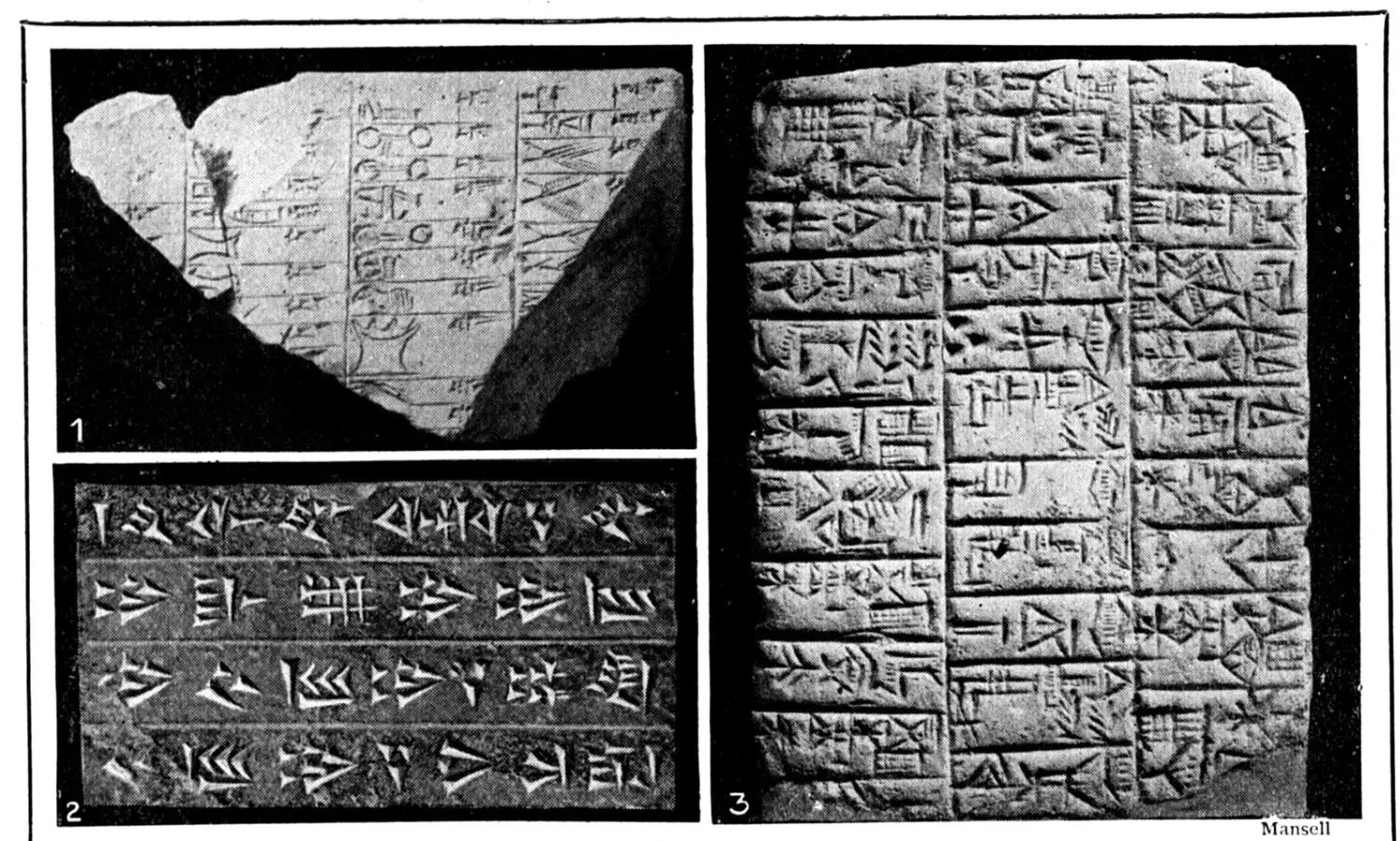Sumerian Writing and Cuneiform
- The first system of writing was invented by the Sumerians. The main reason the Sumerians came up with this system was through necessity. A written language was required so that trade could be carried out between city-states. Transactions had to be recorded and it was vital for rulers governing a city-state to have a way of keeping its own records.
- Later this form of writing was adapted to other languages in Mesopotamia, such as Assyrian and Babylonian.


How did people begin to write in Cuneiform?
- The Mesopotamians would write using a tool called a reed stylus (a stick or pen-lie object) impressed on soft clay tablets which were then left to dry and set under the sun. This was long before human beings started to use paper and ink pens as we do today.
- A range of different clay tablets were used. Some of them were flat while others were similar to prisms and cylinders. Cylinder seals were small stone, glass, bone, ivory or shell cylinders. They had a design engraved into them and this was rolled onto the clay so that the design would be repeated. The clay strip would then be used to seal a range of objects, from doors to jars.
- Sumerian writing began with pictographs, which were small pictures that represented objects, words, phrases or ideas. These pictures were very popular for recording transactions. For instance, the earliest records show that the sale of beer was a popular daily event. The pictographs show how many vats of beer changed hands in a transaction.
- Over time the ancient Mesopotamians developed phonograms. They were symbols which represented speech sounds and went beyond the simple image of the pictographs to help provide more meaning. They were closer to our understanding of a word.
- Eventually, scribes, the people who did the writing, began to press their reed pen into the clay at an angle. This produced several small lines which look like wedge strokes.

Literature
- The new writing system was not only used for trade and accounting. It was used for a range of creative purposes too.
- The first writer was the Mesopotamian priestess Enheduanna. She wrote hymns to the goddess Inanna in the city-state of Ur.
- One of the most impressive works of literature was the Epic of Gilgamesh. This remarkable work is a long poem that tells the tale of a Sumerian king who fights against a monster in his search for the secret of eternal life. The king has powers which suggest he is not just a human being, but many believe that he is based on a real-life Mesopotamian king.

Translation
- We take the existence of these texts for granted today, but in truth they were only translated quite recently.
- The translation of these texts is a very complicated task because there are hundreds of different symbols and meanings. In addition, these symbols and meanings were not the same in all the regions of Mesopotamia and changed over time.
- During the 19th Century AD, talented translators, such as George Smith and Henry Rawlinson developed a big interest in cuneiform texts. They were able to decipher the meaning of many texts and translate them into English.
- Smith deciphered and translated The Epic of Gilgamesh and the Flood Story, familiar from the bible, in which god floods the world to punish mankind for its sins.
- Rawlinson worked at the archaeological site of Nineveh in 1846 when Ashurbanipal’s library was discovered. The library, Located at Nineveh, is the first of its kind with 30,000 cuneiform tablets in its collections. He provided the first translations from the library.
- There are still large numbers of cuneiform tablets yet to be translated and more and more are discovered every year.

Later influence of cuneiform
- This approach to writing could be understood by people from different tribes and so it was used as a way of communicating for a long period of time by many different cultures. It was only replaced by alphabetic script at around 100 BC. Alphabets replaced cuneiform writing because there were only a small number of letters to remember rather than hundreds of different symbols.
- The Egyptians also invented a system of writing called hieroglyphics at a similar time to the development of the Mesopotamian system. Scholars say that the Mesopotamian system did appear first though.



